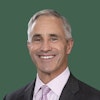Published
March 21, 2017
When it comes to business talk in the news, there tend to be stories about small businesses and others about large businesses. But there is a rich and diverse group of businesses who don’t fit neatly into those two boxes. What about the middle?
The middle market covers companies with $10 million to $1 billion in annual revenue. These 200,000 companies employ 40 million workers and generate 40% of U.S. GDP.
To better track and understand the attitudes of these businesses, the U.S. Chamber and RSM US, a leading provider of audit, tax and consulting services to the middle market, have partnered to produce the Middle Market Business Index (MMBI), a quarterly survey measuring the health and growth of these mid-sized companies

Simply put, these companies are upbeat. Middle market companies are growing faster than ever and reported their highest ever levels of optimism.
Optimism rose in the latter half of 2016 and accelerated in the first quarter of this year.
Nearly seven in 10 respondents expect the economy to improve over the next six months. The same percentage expects higher revenues, and two-thirds see higher earnings over the same time span.
These companies are also optimistic when it comes to their workforce. Half of those surveyed expect to hire more, and 57% expect to spend more on employee wages and benefits.


Sources of Optimism and Challenges
What are they positive about in 2017?
Middle market companies see the greatest opportunities for positive policy changes when it comes to tax reform, health care reform, reducing regulations, and improving our infrastructure. Both President Donald Trump and the Republican-controlled Congress have made all four of these issues a priority.
What are biggest challenges?
One is finding qualified workers. Seventy-four percent of companies said they have difficulty finding qualified workers. It’s a reminder that improving our education and job training system with input from the employer community is critical for shrinking this skills gap.
But the biggest risk to middle market optimism is Washington dropping the ball. Optimism has been instilled. It’s up to the White House and Congress to solidify that confidence.
“The promise of tax and regulatory reforms have had a near-term positive impact on their businesses; yet, it remains to be seen if these anticipated policy changes will live up to their expectations,” said RSM Chief Economist Joseph Brusuelas. “Failure to deliver would represent a huge risk to the outlook.”
If Washington does deliver, it would likely result in a serious jolt to the economy.
You can read the entire report here.
About the authors

Thomas M. Sullivan
Thomas M. Sullivan is vice president of small business policy at the U.S. Chamber of Commerce. Working with chambers of commerce and the U.S. Chamber’s nationwide network, Sullivan harnesses the views of small businesses and translates that grassroots power into federal policies that bolster free enterprise and reward entrepreneurship. He runs the U.S.





